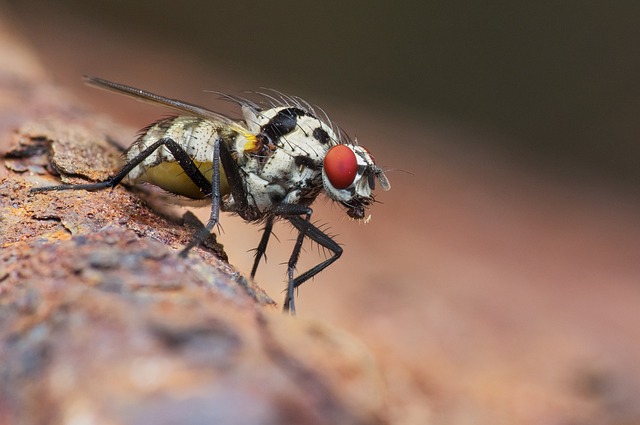Bed bug heat treatment is an eco-friendly, non-toxic method that effectively eliminates bed bugs from homes, hotels, and other environments by heating structures to specific temperatures. Unlike traditional chemical pesticides, it addresses all life stages of bed bugs and leaves no residues, making it ideal for sensitive areas. Early detection through signs like bites, stains, or odors is crucial, as is regular inspection for hidden eggs. The four-step heat treatment process involves vacuuming, heating to 120°F – 150°F, inspecting, and returning items. Professional services utilize advanced equipment and offer post-treatment support, preventing future infestations. Case studies show high success rates, with minimal disruption and swift resolution compared to traditional chemical methods.
Bed bugs are a common pest that can infiltrate homes and businesses, causing discomfort and stress. Understanding effective bed bug detection and control methods is crucial for minimizing their impact. This comprehensive guide delves into the world of bed bug heat treatment—a revolutionary solution gaining traction. We explore the spread of these pests, early detection signs, and traditional extermination limitations.
Through this article, readers will discover the benefits of heat treatment, its step-by-step process, professional services, post-treatment care, and real-world success stories, offering a practical approach to managing bed bug infestations.
Understanding Bed Bug Heat Treatment: A Comprehensive Overview

Bed bug heat treatment is a specialized and effective method for eliminating these persistent pests from homes, hotels, and other environments. This process involves heating structures to specific temperatures, which is a safe and eco-friendly approach that doesn’t rely on harsh chemicals. During treatment, heated air is circulated throughout infested areas, raising the temperature to levels that are fatal to bed bugs but safe for human occupation.
This method offers several advantages, including its ability to target all life stages of bed bugs, from eggs to adults, ensuring comprehensive control. Unlike traditional pest control methods that may only kill adults, heat treatment addresses the entire population, making it a more permanent solution. Additionally, it’s non-invasive and doesn’t leave behind residues or chemicals, making it ideal for sensitive environments where other treatments might be inappropriate.
How Bed Bugs Spread and the Importance of Early Detection

Bed bugs are highly mobile and can spread quickly through various means, making early detection crucial for effective control. They travel from place to place by hitching a ride on objects such as furniture, luggage, clothing, and even pets. Once introduced into a new area, bed bugs can multiply rapidly, especially in spaces where people sleep or rest, like hotels, apartments, and homes. Their ability to hide in narrow crevices and reproduce at an alarming rate makes them hard to eradicate without professional intervention.
Early detection is key to minimizing the impact of a bed bug infestation. Recognizing the presence of these pests through signs like blood spots on bedding, itchy welts on skin, or a distinctive sweet, musty odor can allow for prompt action. Bed bug heat treatment, when conducted by trained professionals, is an effective method to eliminate even the most stubborn infestations. By targeting the insects with precise, heated temperatures, this method ensures a thorough and quick fix, preventing further spread and providing peace of mind for affected individuals.
Common Signs Indicating a Bed Bug Infestation

Many people only realize they have a bed bug infestation when symptoms become noticeable. However, there are several signs indicating an active invasion that property owners should be aware of. One of the most common and visible signals is the presence of small red bites on exposed areas of skin, often concentrated around the neck, face, hands, or feet. These bites typically appear in straight lines and can cause itching and irritation. Bed bugs also leave behind tiny dots or stains on bedding, mattresses, and walls, which are caused by their exoskeletons shed during molting.
Another telltale sign is the presence of small dark spots, resembling coffee grounds, on upholstery, rugs, and cracks in furniture. These spots are actually bed bug feces. Live bugs can also be discovered by carefully inspecting seams and folds of bedding, as well as along baseboards and under furniture. A distinct musty odor, often described as a combination of mold and soap, may also fill infested areas due to the bugs’ cast off skin and other organic waste materials. When left untreated, bed bug heat treatment becomes necessary to eradicate these persistent pests from homes or businesses.
Traditional Methods of Bed Bug Extermination and Their Limitations

Traditional methods of bed bug extermination, such as chemical pesticides, have long been the go-to solution for managing infestations. However, these conventional approaches come with several limitations. Chemical treatments can be effective in eliminating visible bugs but often fail to target the eggs and nymphs hidden in crevices and mattresses. This incomplete treatment leads to a cyclical problem where bed bugs quickly reproduce and build resistance to pesticides over time, rendering them less effective.
Additionally, many traditional methods pose health risks to residents, especially sensitive individuals or children, due to the use of toxic chemicals. There’s also the environmental impact to consider—chemical pesticide residue can persist in homes, potentially contaminating other surfaces and posing risks to pets and wildlife. As a result, alternative solutions like bed bug heat treatment are gaining traction for their non-toxic, comprehensive approach to eliminating these pests from living spaces.
The Rise of Heat Treatment as an Effective Solution

In recent years, bed bug heat treatment has emerged as a game-changer in the realm of pest control. This innovative method involves using high temperatures to eliminate bed bugs and their eggs from infested areas, offering a swift and effective solution. The rise of heat treatment is attributed to its ability to target and destroy bed bugs without relying on chemical pesticides, which can have adverse effects and contribute to resistance.
The effectiveness of bed bug heat treatment lies in its ability to reach and surpass the temperature thresholds that bed bugs cannot survive. Professional pest control experts carefully apply heat sources, such as specialized heaters or steam equipment, to treat infested rooms, ensuring every nook and cranny is reached. This method is particularly advantageous for treating hard-to-reach areas and preventing the spread of bed bugs, making it a preferred choice for both residential and commercial spaces.
Step-by-Step Guide to Bed Bug Heat Treatment Process

The bed bug heat treatment process is a comprehensive approach designed to eliminate these persistent pests from infested areas. Here’s a step-by-step guide:
1. Preparation: Begin by removing all bedding, furniture, and personal items from the treated rooms. Vacuum thoroughly to pick up any visible bed bugs or eggs. Seal these items in tightly sealed plastic bags for later treatment or disposal.
2. Heat Application: Professional heating equipment is used to raise the temperature within the infested space to levels that are fatal to bed bugs and their eggs (typically between 120°F – 150°F). This process ensures maximum exposure, reaching hidden areas like cracks, crevices, and furniture seams.
3. Monitoring: After heating, a thorough inspection is conducted to verify the effectiveness of the treatment. Live bed bugs may be visible, providing confirmation of eradication.
4. Post-Treatment: Once confirmed clear, all items can be returned to their original locations. Regular monitoring for any signs of reinfestation is crucial in maintaining a bed bug-free environment.
Benefits of Choosing Professional Heat Treatment Services

Choosing professional heat treatment services for bed bug extermination offers numerous advantages. Firstly, it ensures a comprehensive and targeted approach, as specialized teams are trained to apply heat at precise temperatures and durations, eliminating bed bugs and their eggs effectively. This method is particularly beneficial for large-scale infestations or hard-to-reach areas that DIY solutions might miss.
Professional services also guarantee minimal damage to personal belongings and structures. They employ advanced equipment and controlled heat application techniques to prevent the degradation often associated with alternative treatments. Moreover, professionals provide post-treatment support, offering guidance on preventing future infestations and ensuring a quieter, bug-free home or business environment.
Post-Treatment Care and Prevention Strategies

After a successful bed bug heat treatment, proper post-treatment care is essential to prevent reinfestation. This includes thoroughly cleaning and sanitizing the treated area, removing any infested items like furniture or bedding that couldn’t be heated, and sealing potential entry points such as cracks and crevices in walls, floors, and furniture. Regular vacuuming with a high-efficiency particulate air (HEPA) filter can help remove any remaining bed bugs or eggs.
To further prevent future bed bug infestations, it’s crucial to maintain a clean environment by regularly laundering bedding at high temperatures, avoiding accepting secondhand furniture or items that may harbor pests, and sealing any visible gaps or openings around windows and doors. Regular inspections, especially in areas prone to pest activity, can help catch potential infestations early on, making control measures more effective and minimizing damage.
Real-World Success Stories: Case Studies of Bed Bug Heat Treatment

In real-world applications, bed bug heat treatment has proven to be a highly effective solution for infestations. Case studies from various regions highlight successful outcomes, demonstrating the power of this method. For instance, in urban settings where bed bugs have long been considered stubborn and hard to eradicate, professional heat treatments have shown remarkable success rates—often achieving over 95% elimination within a single visit.
These case studies also illustrate the benefits of bed bug heat treatment in terms of speed and minimal disruption. Unlike traditional chemical methods that may require multiple applications and extensive preparation, heat treatment takes just a few hours, allowing for swift resolution without the need for extensive home or property vacating. This efficiency makes it a popular choice among both residential and commercial property owners, ensuring a peaceful and pest-free environment.
